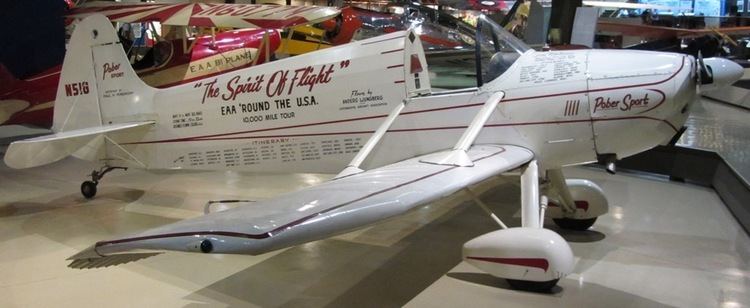 | ||
The P-5 Pober Sport is an early low-wing homebuilt aircraft designed by Experimental Aircraft Association founder Paul Poberezny. The one example built was flown across the country to every EAA chapter at the time.
Contents
Design and development
The first drawings of the Pober Sport were published in the November 1956 issue of the experimenter.
The Pober Sport is a strut-braced, low-wing, taildragger aircraft.
The fuselage is a modification of the Ace Baby Ace. The landing gear is from a J-3 Cub. The fabric covered aluminium wings are from a high-wing Luscombe Aircraft design. The elevators are controlled with push-pull tubes.
Operational history
The Pober Sport was introduced at the 1959 EAA convention. During the sourcing of the parts, Poberezny used a C-47 to pick up the Luscome wings, and started work on the ailerons while in-flight. Anders “Andy” Ljungberg later toured the United States on a 72 stop tour with the aircraft to visit every EAA chapter in the country. The tour was broadcast and monitored by amateur radio operators along the route. The aircraft was donated to the EAA AirVenture Museum in Oshkosh, Wisconsin in 1975.
Specifications (Poberezney P-5 Pober Sport)
Data from Experimenter
General characteristics
Performance
